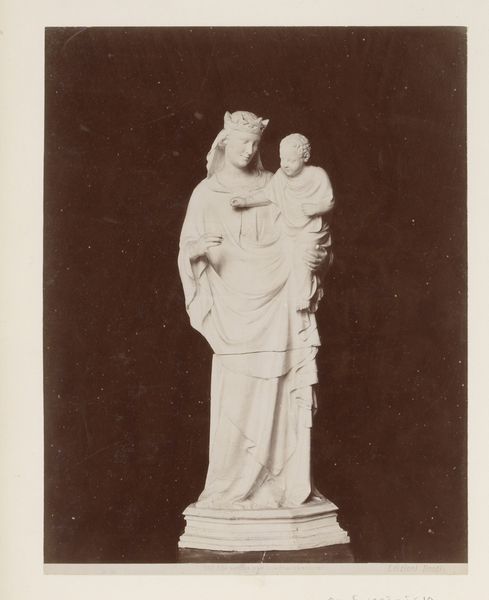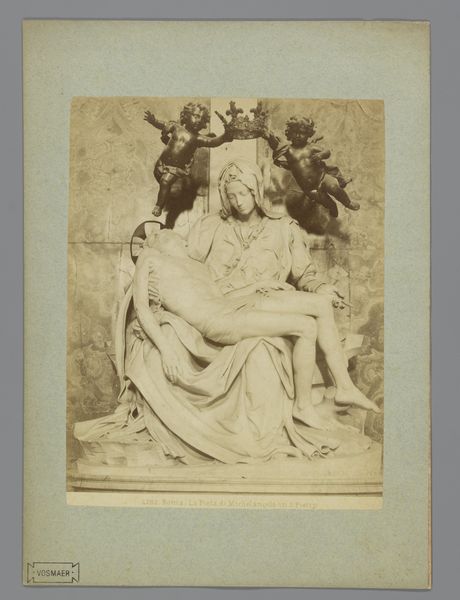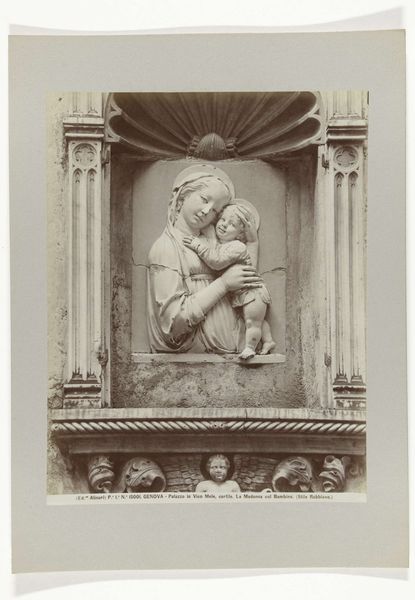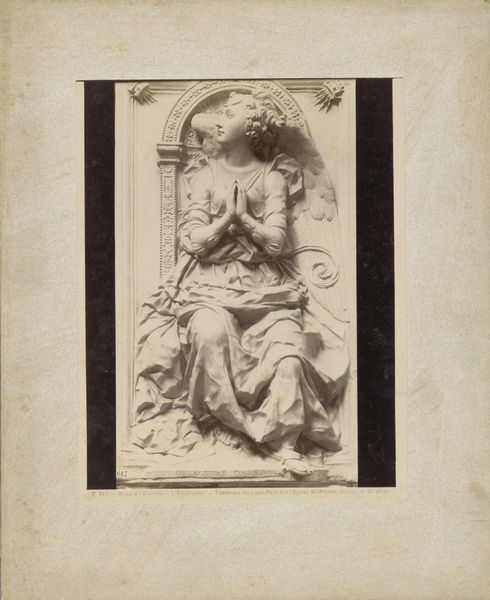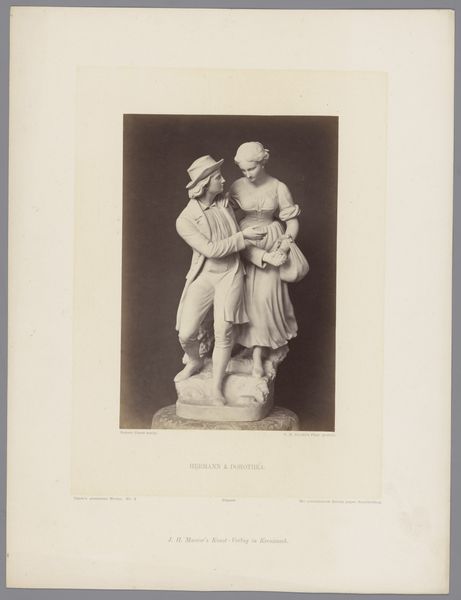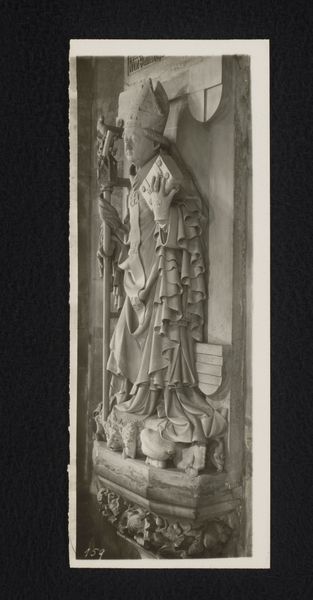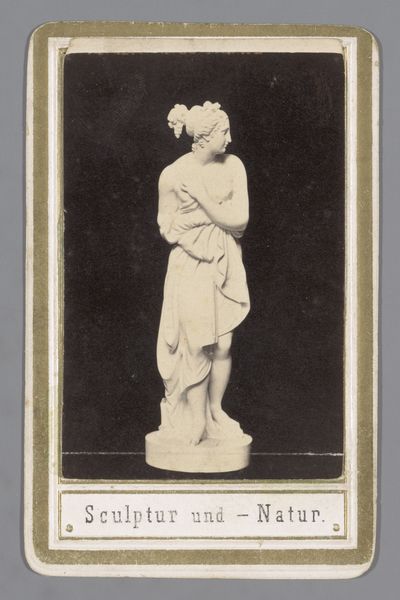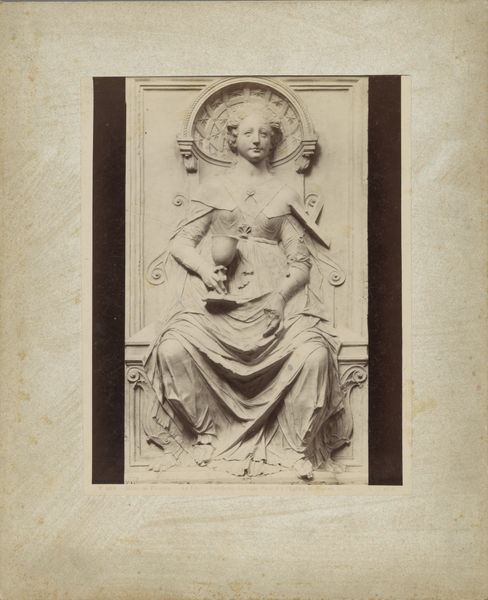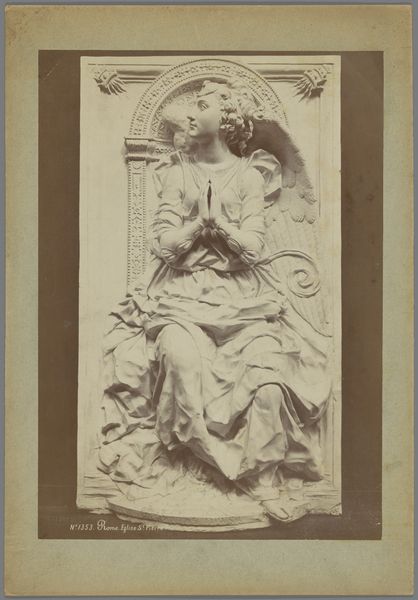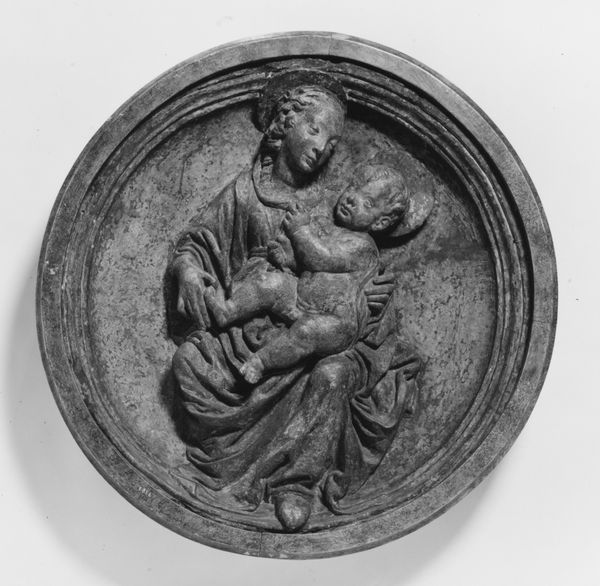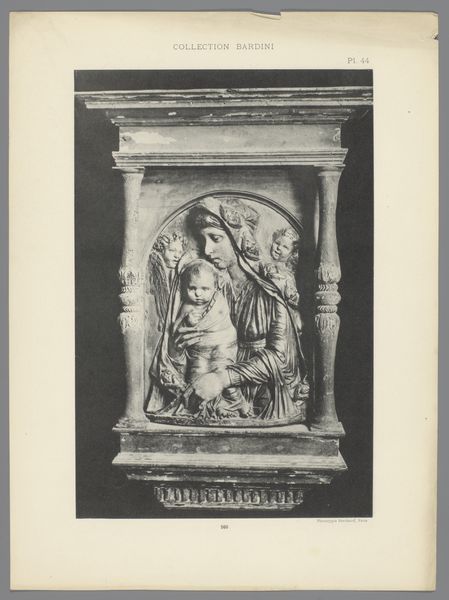
Dimensions: height 279 mm, width 213 mm
Copyright: Rijks Museum: Open Domain
Curator: Let’s take a moment to contemplate this remarkable sculpture, a marble relief entitled "Pietà, relief, likely made in Genoa," dating from around 1870 to 1900. Editor: The immediate impression is one of serene sorrow. The stark marble amplifies the poignancy; you feel the weight of grief in the cool, unyielding stone. It is the quiet stillness after unimaginable suffering. Curator: Precisely. The Pietà, a classic artistic motif, depicts the Virgin Mary cradling the body of Jesus. The artist is unknown but working in Genoa, a region renowned for its marble carving tradition. Look at how Mary’s veil softly enfolds both her head and Jesus’s – a shared shroud almost. Editor: The symbolism here is, of course, layered. The Pietà has always served as a reminder of mortality and resurrection. But there's more than just religious symbolism at work; it speaks to universal experiences of loss, empathy, and the bond between mother and child. Those hands, though, they haunt me - Mary’s support, but her hands almost seem to be asking. Curator: The hands certainly convey volumes, and consider the circle as a compositional choice - like the Roman Tondo - both enclosing the sacred subject but also adding some Baroque flourishes and theatrical drama through implied movement. Circles imply cyclical rhythms, too, birth and death endlessly intertwined. Editor: Indeed, the circular frame concentrates the viewer’s gaze. In iconographic tradition, Mary is not simply mourning but also presenting Christ's sacrifice. Is she questioning why? What happens next? In psychology, circular forms provide both security but also repetition that may imply depression - a perfect capture for the "moment after". Curator: It is a potent depiction, blending the stylistic elements of Baroque art with the deep spiritual significance inherent in the Pietà. A powerful testament to sorrow but ultimately one of hope through shared love and deep sympathy. Editor: Looking at the past, these representations still carry profound messages about human fragility and strength – reminding us that even in the darkest of times, compassion endures. A memory in stone.
Comments
No comments
Be the first to comment and join the conversation on the ultimate creative platform.
